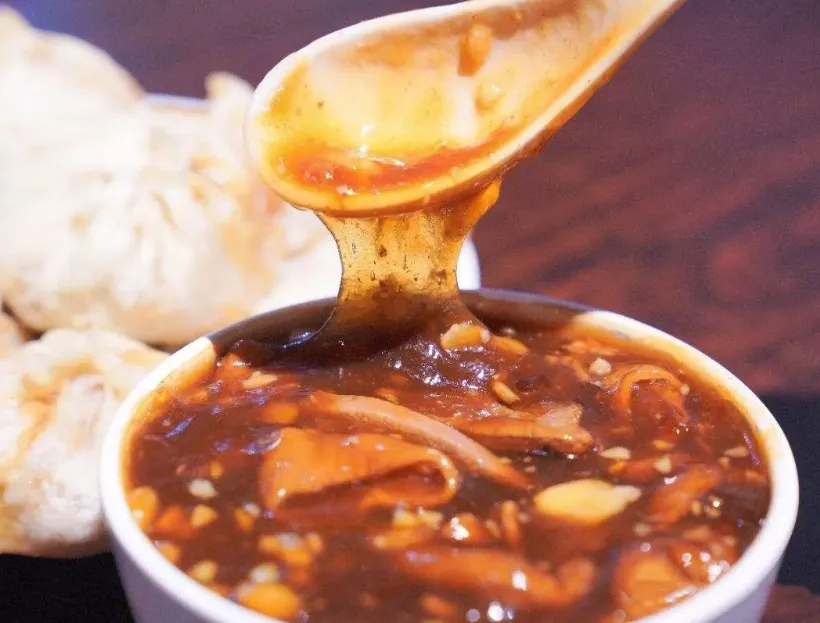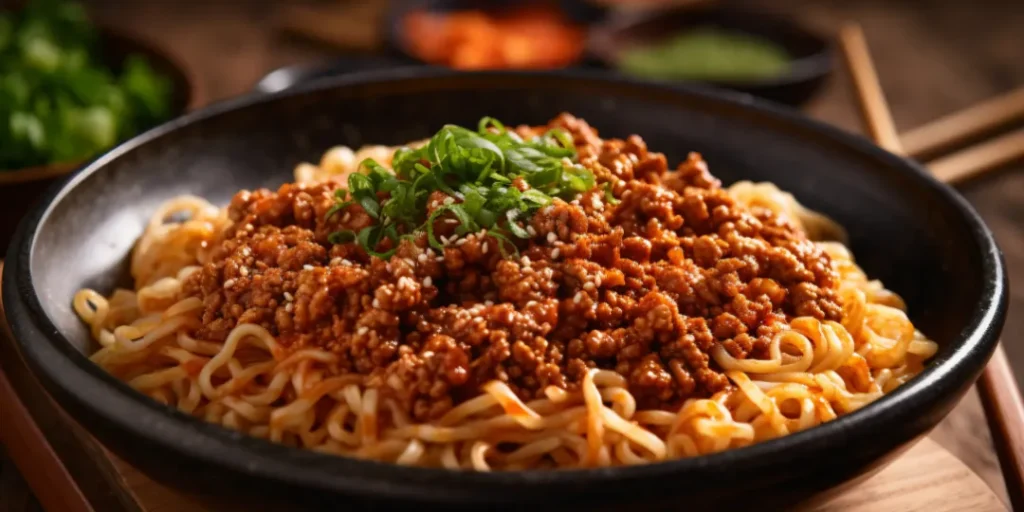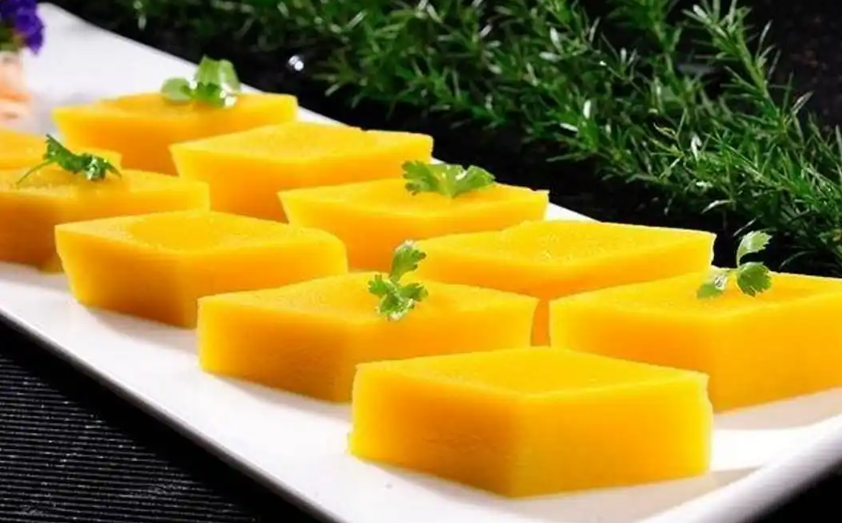1.Luzhu

Luzhu is a traditional Beijing delicacy, mainly composed of soup made from braised pork offal and baked hard-wheat cakes. The main ingredients include soft and tasty pig intestines, pig lungs, braised tofu and fire-baked bread. These ingredients absorb enough broth in the stew, and the taste is rich but not greasy. When eating, people usually taste the original flavor first, and then add chili oil and balsamic vinegar to make the taste more layered and richer.
2.Stewed Pig Liver

Beijing Fried Liver is a long-standing and beloved traditional snack made mainly of pig intestines and liver. The dish originated in the Song Dynasty and evolved through many historical periods before finally reaching its current form during the Tongzhi period of the Qing Dynasty. The process involves washing and boiling the pig intestines, cutting them into small pieces, adding them to the seasoning and soup, and then adding a small amount of liver to thicken the dish. Despite the name “fried liver”, it is actually cooked by stewing and is usually eaten without utensils, but by swirling around in circles. This dish is known as one of the top ten famous snacks in China for its rich taste and special preparation process.
3.Peking Duck

Peking duck is a representative delicacy of Beijing and is known as “the most delicious food in the world”. Its uniqueness lies in the use of precious Peking duck as the raw material, which is the best meat duck in the world today. The use of fruit wood during roasting makes the roast duck red in color, tender in texture, mellow in taste, and fat but not greasy. In addition, the roast duck has thin skin, tender meat, and rich aroma. It is often eaten with golden cakes, sweet bean sauce and chopped green onions. It tastes crispy and delicious, which is endless aftertaste.
4.Rolling Donkey

Donkey rolls are one of the thirteen unique snacks in old Beijing. They are named after the soybean flour sprinkled on them during the making process, which is similar to the loess raised when wild donkeys roll around in the suburbs of old Beijing. This dessert is mainly made of steamed yellow rice flour and fried soybean flour. It has a soft and glutinous taste, sweet and delicious, with distinct layers and a strong soybean flour aroma. Although glutinous rice flour is used as the raw material, most snack shops no longer use yellow rice flour, but use river noodles. This snack is available in all seasons and is a dessert suitable for all ages, but because it has a relatively sticky taste, you may feel sick if you eat too much.
5.Old Beijing Noodles with Soy Sauce

Old Beijing Noodles with Soy Sauce is a specialty snack in Beijing. It is made of noodles and soybean sauce and has a strong flavor. The production process of noodles with soybean sauce is quite particular. First, you need to make the sauce. Stir-fry pork belly, green onion and ginger in oil, and then add yellow sauce or sweet noodle sauce and stir-fry. After the noodles are cooked, add the sauce and vegetables, such as cucumber shreds and mung bean sprouts, mix well and serve. In addition, there is also the method of over-water noodles or cold noodles, that is, the noodles are cooked and then soaked in cold water and then added with sauce and vegetables. This dish is very popular in Beijing and is a representative of street food.
6.Fermented mung bean milk

Douzhi is a unique snack in Beijing. It is made from the light green soup left over from making vermicelli or dough noodles with water-milled mung beans. As early as the Qianlong period of the Qing Dynasty, douzhi had already become food on the emperor’s table. It tastes sour, but when eaten with mustard greens, chili oil and fried dough rings, it has four of the five flavors and a rich taste. This unique taste requires long-term exposure to be loved by people, so it is regarded as an authentic Beijing snack.
7.Fried Tripe

Baodu is a famous traditional snack in Beijing, especially loved by old Beijingers in autumn. This snack was popular in the capital during the Qing Dynasty and was loved by many dignitaries. Baodu is mainly made of sheep or cow tripe. The blanching time and heat must be precisely controlled during the production process to ensure that it tastes neither too hot nor too raw. When eaten, it is usually served with a sauce made of sesame paste, chives and fermented bean curd, which makes it more delicious and crispy. Although the price has increased now, its unique taste and flavor are still unforgettable.
8.Steamed Rice Cakes with Sweet Stuffing

Aiwo Wo is a traditional snack in Beijing, especially popular around the Spring Festival, and is available until late summer and early autumn. This delicacy is mainly made of glutinous rice, with fillings such as walnuts, melon seeds and sesame seeds wrapped inside. It tastes soft, sticky and sweet after steaming. In appearance, Aiwo Wo is snow-white, and the top is often decorated with red hawthorn cakes, which is both beautiful and tempting. In addition to its deliciousness, Aiwo Wo is also closely related to the “Chuxiu Palace” in the Forbidden City, which has gradually made it famous in history.
9.Pea Yellow

Pea yellow is a special snack in Beijing and was once a snack in the palace. It is made by grinding, peeling, and boiling the finest white peas, adding sugar sand, and then condensing and cutting them into pieces. The texture of pea yellow is neither sticky nor crispy, but melts in the mouth, with almost no bean taste and a refreshing feeling. Especially in spring and summer, pea yellow becomes a seasonal delicacy, with a sweet, refreshing and delicious taste.
10.Focus Ring

Jiaoquan is a classic Beijing snack, loved by people of all ages. This delicacy has a golden shell, fragrant and crispy texture, just like a fried version of small dough sticks. Its unique taste and texture make it a perfect match with soybean juice for breakfast in old Beijing. Not only that, Jiaoquan is shaped like a bracelet, with a deep yellow color and unique flavor. Whether it is paired with sesame cakes or enjoyed with soybean juice, Jiaoquan can bring a different taste experience to diners.
